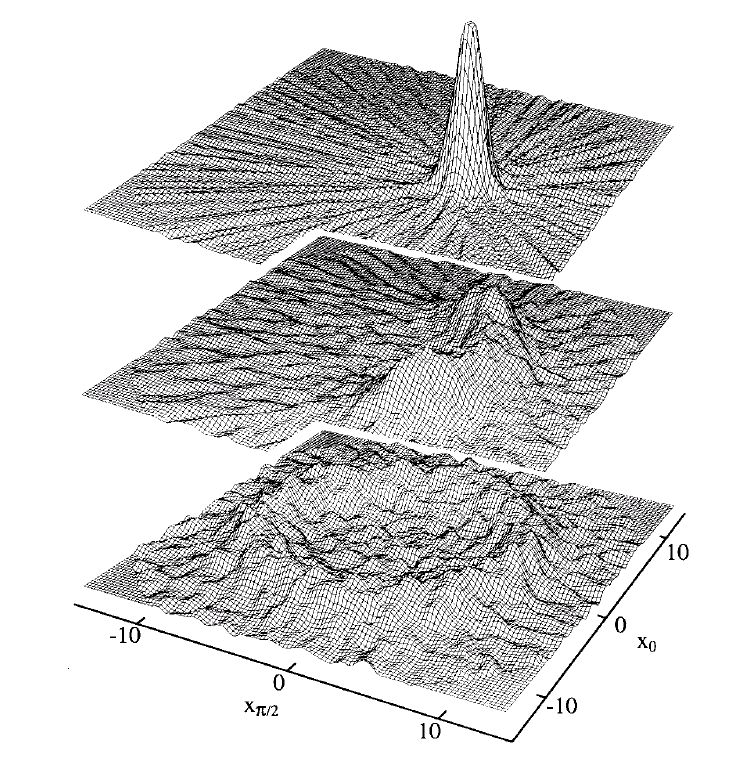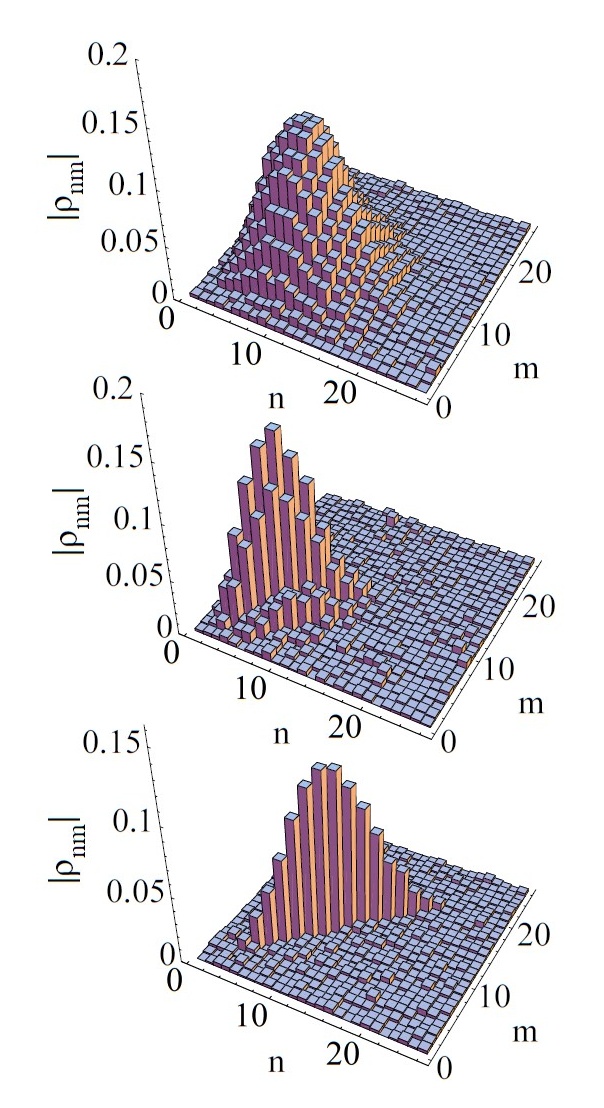
The states presented so far were in theory minimum uncertainty states, thus the product of the two complementary uncertainties of phase- and amplitude-quadrature takes on the minimum value allowed by the Heisenberg relation (we neglect for simplicity for a moment unwanted experimental noise or detection inefficiencies). By externally adding noise to the experimental system, we can generate highly non-minimum-uncertainty states. The following graph shows the result of the addition of phase noise (two cases), amplitude noise or both simultaneously to a coherent state. Experimentally the noise was added electronically or mechanically. My endeavor had been to measure really chaotic light sources preferably the sun light itself, but time didn't suffice...

The addition of phase noise to the coherent state results in smearing out the states' phase space distribution along a circle in phase space.

The corresponding density matrices indicate the loss of coherence, i.e. the loss of
phase information: With increasing phase diffusion all off-diagonal elements approach
zero.

Adding phase and amplitude noise to a coherent state of amplitude zero results in a
thermal state, the light field of a usual light bulb (in the experiment it was generated
by chaotical scattering of coherent light using a rapidly rotating semi-transparent disk,
which is admittedly a very cheap and ugly way to perform an axperiment of this type, but
other settings didn't work within the time limit).
The diagonal elements of its density matrix show the typical exponential decay of the
photon number distribution. Notice that the photon number with the highest probability is
0, as same as the average field amplitude of the thermal state. Thus mostly a light bulb
does not emit anything at all.

![]()